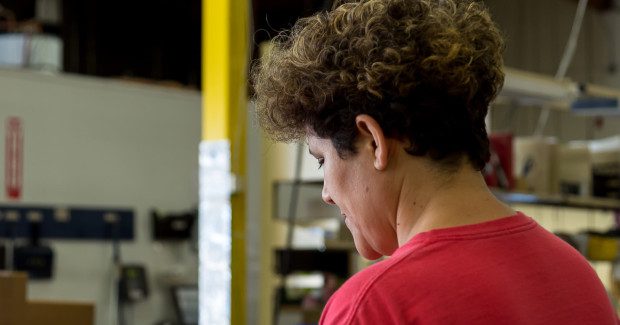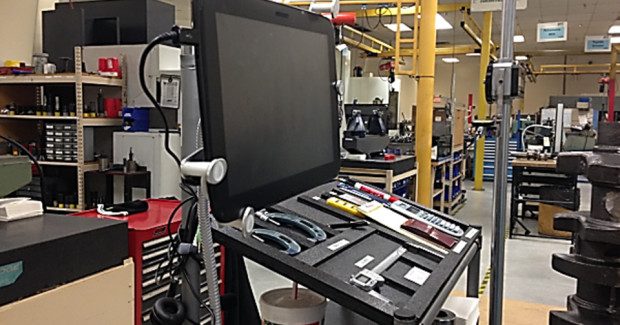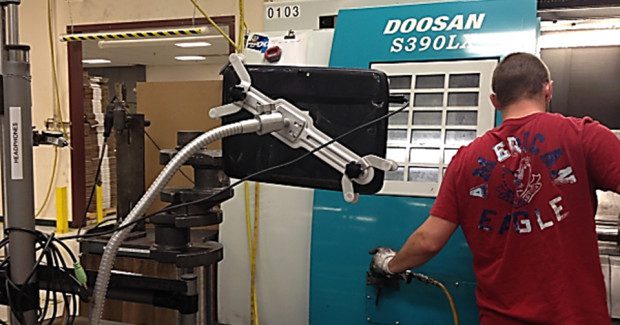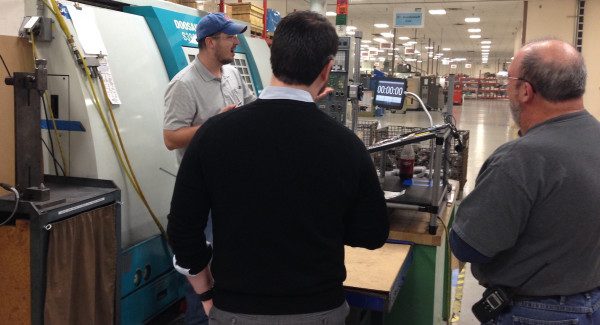The Shop Floor Goes Mobile
Integrating mobile device technology into your manufacturing operations can boost your company’s productivity — but only if you create the right strategy.
Posted: March 4, 2014
One thing is clear: mobile technology is going to play a role in the business operations of every manufacturer in the not-too-distant future. Even at companies where management has yet to adopt a proactive, strategic approach to mobile technology, employees have started the process by bringing their personal devices to work and using them to communicate with co-workers, customers, and suppliers.
In all likelihood, these manufacturers are gaining some business benefit as two-way communications within their organization and across their supply chain improve. But this passive approach will keep manufacturers from fully realizing the business benefits of mobile technology.
Mobile technology has the potential to transform a manufacturer’s business processes, much like enterprise resource planning (ERP) solutions did 15 to 20 years ago. And like ERP solutions — and the MRP (material requirements planning) solutions before them — the transition to mobile manufacturing will be led by companies that adopt a strategy that integrates the new technology into the fabric of their business.
THINK INTEGRATED, THINK STRATEGIC
You’ve invested a lot of time and money creating an IT infrastructure that integrates core business processes to run your enterprise more efficiently. When you add new software capability, you no doubt view the process strategically, evaluating how it will improve a specific business process and how it will be integrated into your overall IT infrastructure. Creating a mobile strategy is no different — you’ll be integrating a combination of solutions and functionality to address specific business requirements.
http://youtu.be/eukLZUfPh3o
Take three minutes and get to know the third biggest enterprise software company in the world.
As with any major software investment, you’ll need to make several strategic business decisions as you add in mobile capabilities. Here are some top considerations:
Define your needs. Determine which of your manufacturing process flows can most benefit from mobile connectivity — and to what extent. Analyze and understand how a specific mobile solution could be used to increase productivity or improve performance.
Develop a deployment strategy. Once you determine where to use mobile technology and what your priorities are, you’ll need to make some deployment decisions. This includes taking a deeper look at the hardware needed, understanding where your people will be accessing data – and when, how, why, and how much detail they will need, evaluating solutions that allow for both ease of use and personalization with real business benefits, and identifying a solution that uses loosely coupled architecture that easily integrates into the core ERP.
Create measurement criteria. Think through how you will calculate the business benefit of adopting mobile technology for a specific business process. Weigh the potential productivity gains against the investment in hardware, software, and employee training. Consider the potential for increased productivity and the business benefit you derive from employees who use mobile technology to respond faster to customer requests, increasing customer satisfaction, loyalty, and sales.
Think in terms of continuous change. Choose a mobility solution that can expand and adapt as your operations evolve. And choose a solution provider who understands manufacturing, its inherent challenges, and the specialized needs of the users.
Plan access based on user roles. For each process you target for mobile technology, determine who will use it to access data, how they will share the data with others, and how you’ll keep the data synchronized. Some remote users need real-time connectivity and the ability to interact with data directly from the main data vault. Others may need to simply receive static reports, emails, or escalation alerts. Know what roles will be using the mobile solutions and how — so you select a solution with appropriate functionality. Everyone from the C-Suite to shop floor managers to field service and sales will have different needs, so evaluate these appropriately.
Optimizing the use of mobile devices in a manufacturing environment is one of the key tactics for increasing workforce productivity. Taking a strategic approach that integrates the new capabilities into a core ERP infrastructure is key to optimal results.








